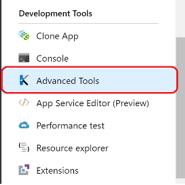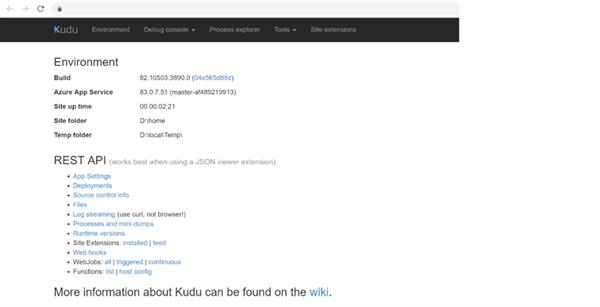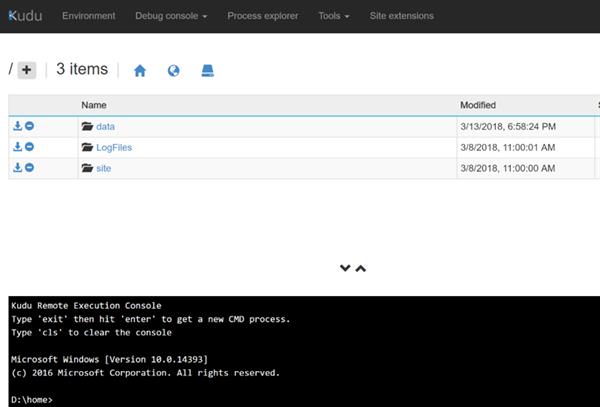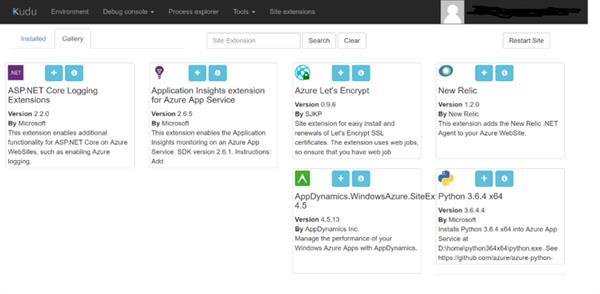What is Azure KUDU?
When we create a web site/app in Azure environment then there are various ways of deploying and monitoring the website example using a publishing profile, cloud shell, KUDU console.
Azure KUDU is one of the fastest and easiest ways of deploying the web site components to the Azure website. Azure KUDU is not only meant for the deployment but also it helps to development and admin team to get the logs of the web site, check the health of application by memory dumps, etc. It can be used as troubleshooting and analysis tools as well because we can get the required logs and we can monitor the processes of web sites that are running in the background. It is integrated with Git repository, CICD as well as we can access KUDU API endpoints programmatically.
How to access KUDU: When we create any web site in Azure then it creates one special ‘SCM’ service site for us. Example- your Azure web site URL is ‘http://ABC.azurewebsites.net/’ then Azure creates SCM site for us with URL ‘https://mysite.scm.azurewebsites.net/’. If you open this SCM service site in the browser, then it opens the KUDU console for us. We can also navigate to this KUDU console by clicking on the ‘Advanced tools’ in the deployment Tools section of a web site.

When you open the KUDU URL then it will look like as below picture –

Azure KUDU has below sections –
- Environment –
It shows important information about the web site like system information, app settings, connection string, environment variables, etc.
- Debug Console –
The debug console is important to console where we can write the commands (CMD and PowerShell) to execute it on our web site. This is a file explorer window, we can also drag and drop the DLL files of the web site and get it deployed smoothly on the website.

- Process Explorer –
This shows all the details related to the web site process, total CPU time, thread count, etc.
- Tools –
This gives us the tools to access a website like a diagnostic dump (gives zip file for use of the diagnostics data), Web job dashboard, Webhooks (Allows URLs to be registered as WebHooks), Zip push deploy, etc.
- Site Extension –
We can add and configure more extensions to the web site using the extension gallery.


Comments
Post a Comment